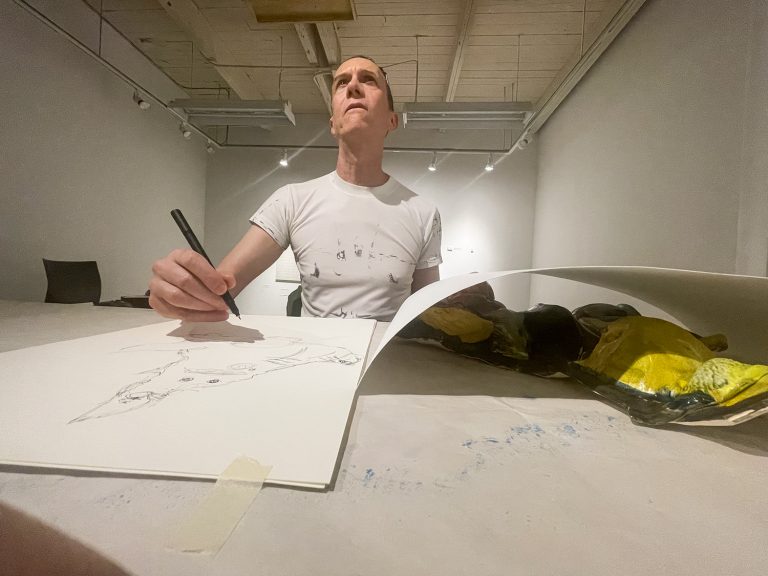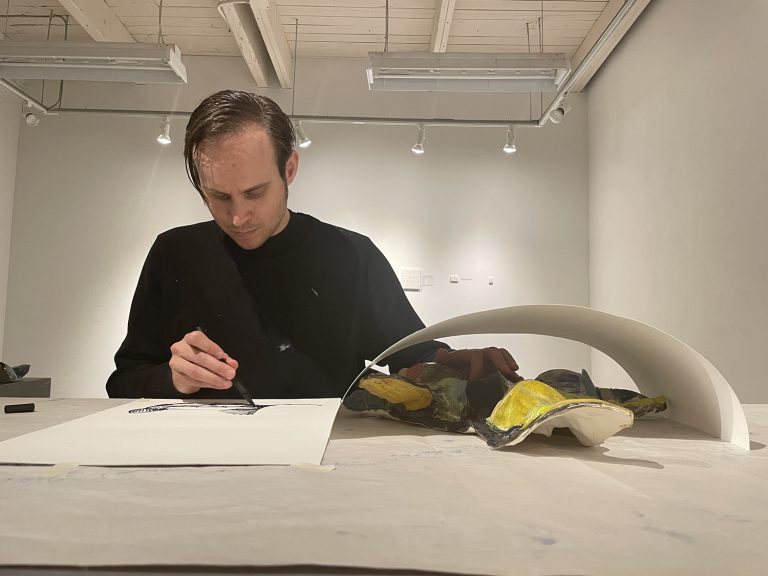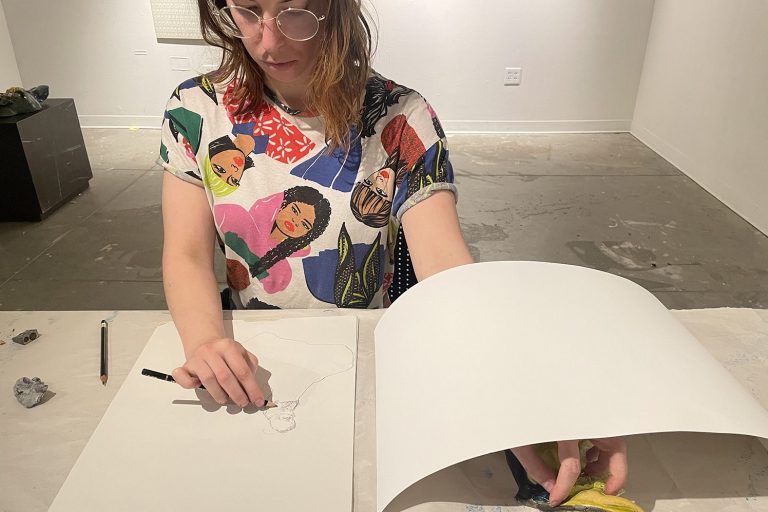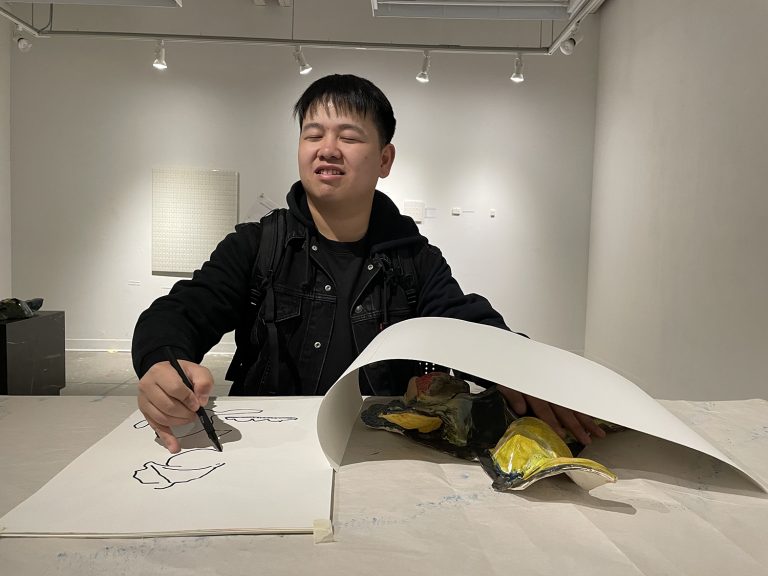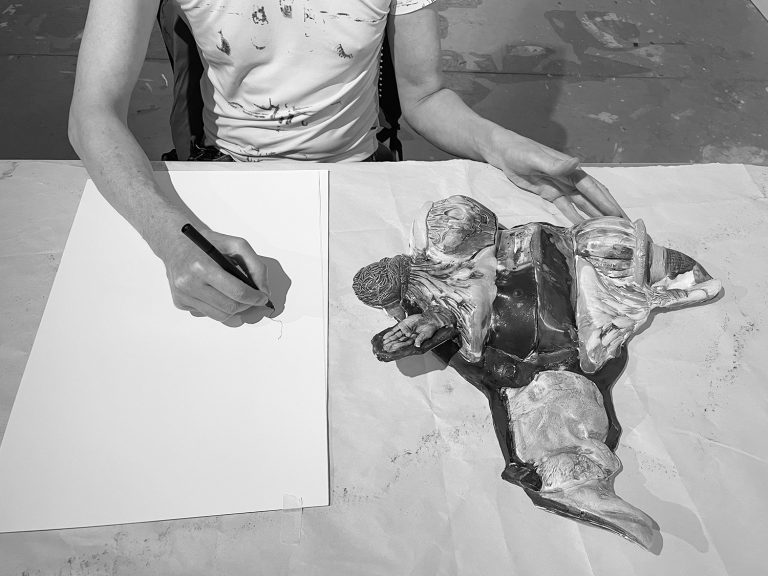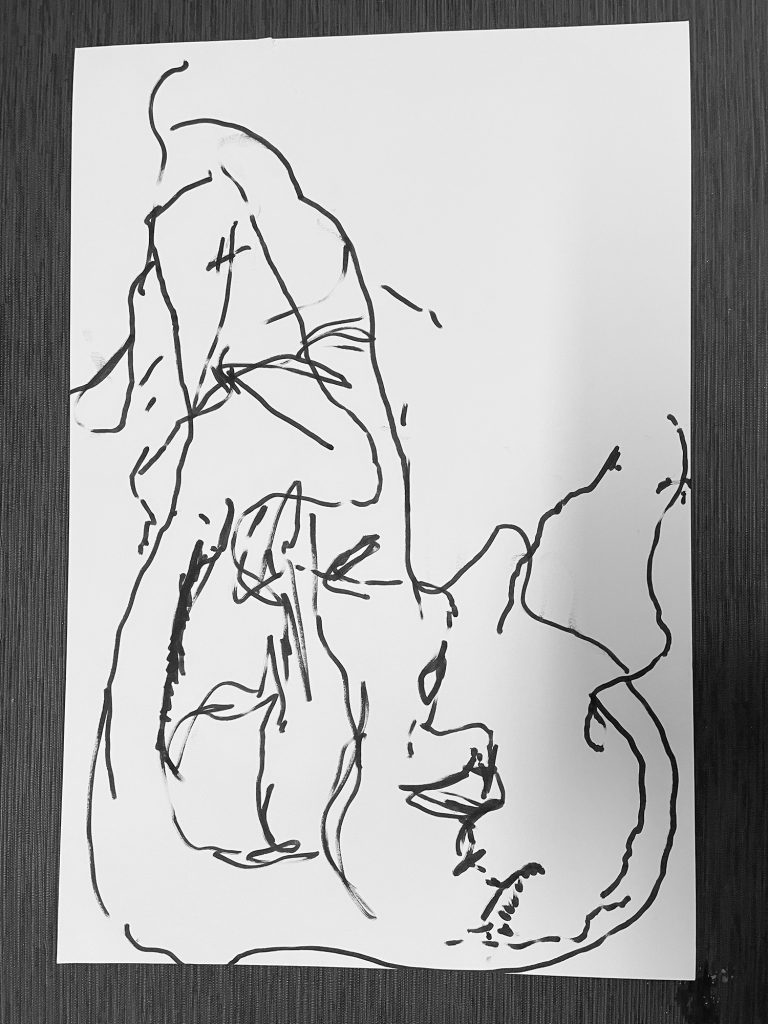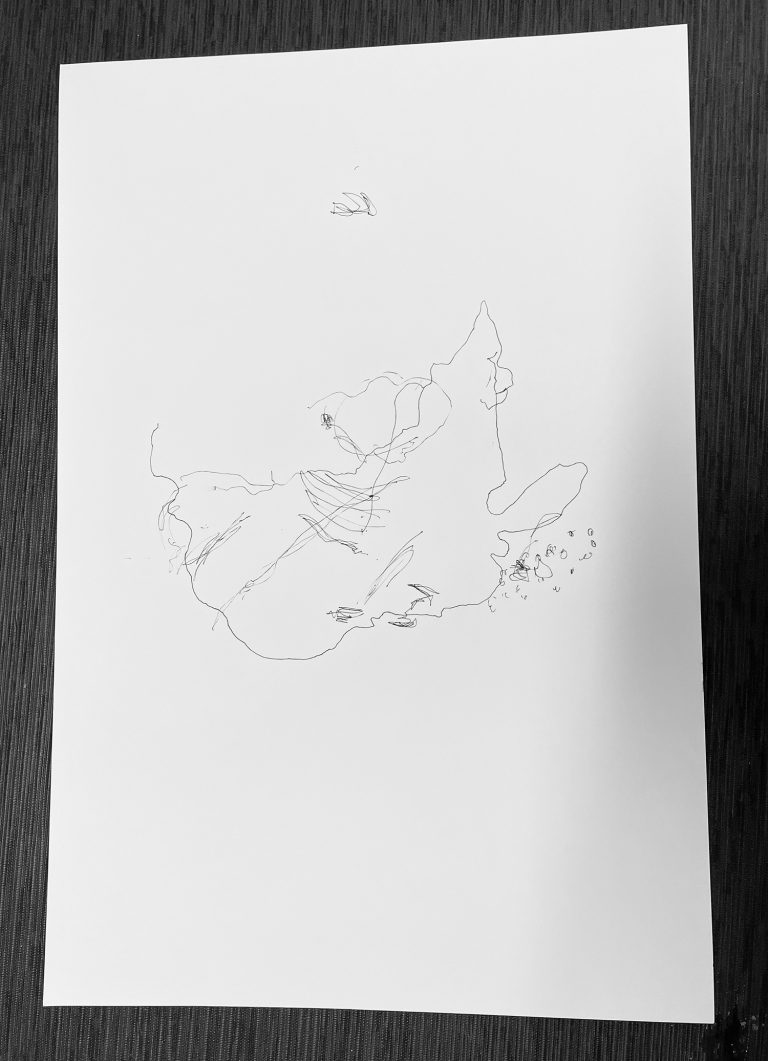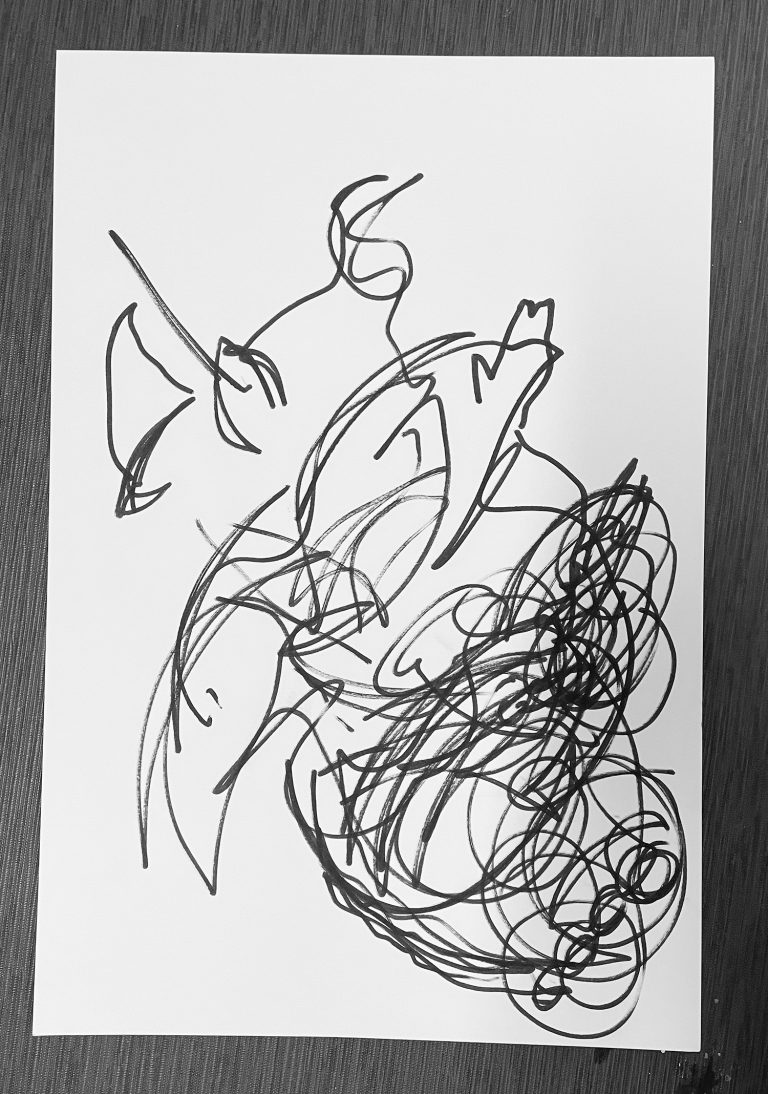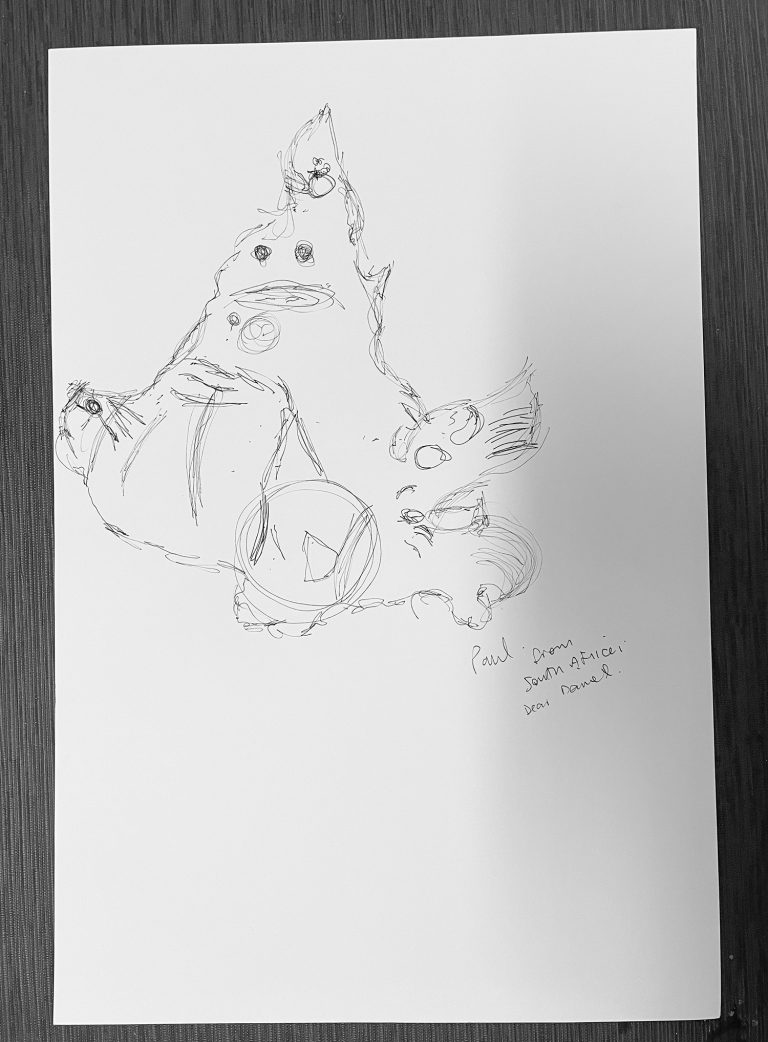Social agnosia
05/2023, Decker Gallery, Meyerhoff Gallery, Baltimore, MD
Made by ceramic, foam, resin, rubber, wood, found objects
The ceramic shape emerges from a fusion of multiple vintage molds sourced from the 60s and 70s, breathing new life into abandoned commercial relics. By reimagining and rearranging these objects, they are imbued with fresh significance, finding a new sense of purpose and identity.




Storytelling
Drawing inspiration from mythology, I have created an apocalyptic world in which all civilization is submerged by water due to the environmental issue. Four Buddhist gods of protection, floating on ocean waves from the East, migrate into Western society.
Reference
The Four Heavenly Kings, revered in Buddhist tradition, are guardians assigned to each cardinal direction, overseeing the world’s welfare. In Chinese mythology, they are collectively referred to as “风调雨顺” (Fēng Tiáo Yǔ Shùn), symbolizing favorable climate, or “四大天王” (Sì Dà Tiān Wáng), meaning ‘Four Great Heavenly Kings’. Each bears identical facial expressions, colors, and weapons, yet fulfills distinct duties in safeguarding the world.
Research of social agnosia
Agnosia is a neurological disorder that impairs a person’s ability to recognize and interpret sensory information.I coined the term “Social Agnosia” to explore how our cognitive functions falter amid the chaotic barrage of complex, irrational information and political turmoil in our world. Similar to prosopagnosia, Social Agnosia can result in detrimental outcomes like diminished performance, heightened stress, and decision-making challenges. This initial phase of my study involves participants interacting with ceramic sculptures, a new combination of casting vintage items through tactile exploration.
In the initial phase of our study, participants will embark on a journey of tactile exploration, delving into ceramic sculptures meticulously crafted from an amalgamation of familiar and beloved objects from yesteryears. However, as these individual shapes coalesce into intricate arrangements, they undergo a metamorphosis, transcending their original forms to become something strange and unrecognizable. This juxtaposition serves as a poignant illustration of the disorienting effect of Social Agnosia, wherein once-familiar elements are distorted and challenging to decipher amidst the tumult of our contemporary world.
Our research endeavors to unravel the enigma of sensory confusion and its intricate dance with cognitive overload when confronted with the rearrangement of familiar objects in an overwhelming manner. By delving into this phenomenon, through structured observation and data collection, I will study participants’ responses, focusing on their ability to identify individual objects, the occurrence of cognitive overload, and the emergence of sensory confusion. I seek to illuminate the intricate workings of the human mind and its capacity to navigate the complexities of our environment.

